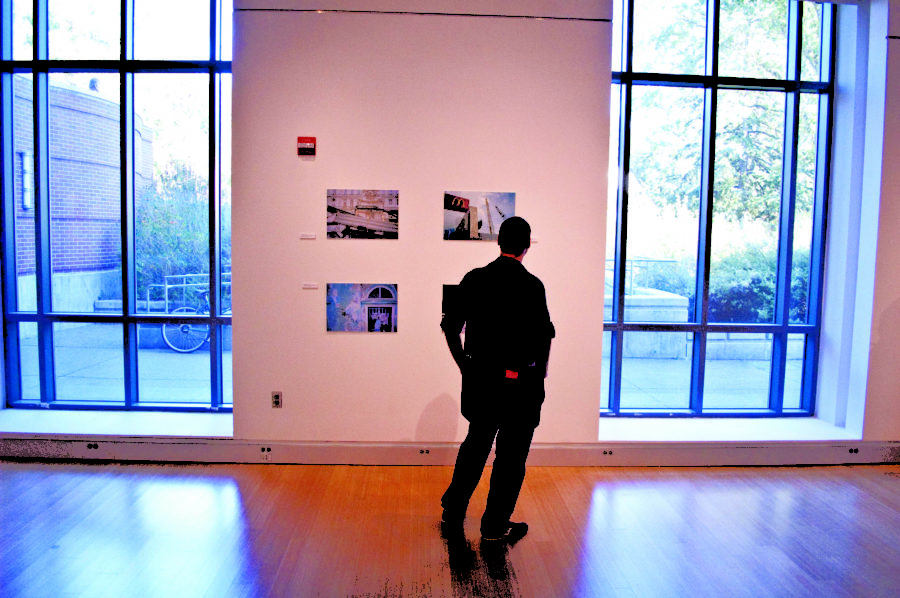During the next month you will be able to walk into a sea of photos and let them tell you a story.
The SRJC Art Gallery opened the Time-Travel Gallery, on Sept. 22, an exhibition of SRJC Art Professor Renata Breth’s photography, that will run until Oct. 22. The exhibit consists of pieces ranging from single images to strings of photos shot over various periods of time.
The exhibit has nothing to do with traveling through time, but is shown in a way that allows viewers’ minds to change and transform, exposing them to a different reality of what photography means.
Several of the photos are abstract, from mechanical construction cranes building enormous skyscrapers to planes on the tarmac.
Breth, who’s worked at SRJC since 1984, earned her MFA in filmmaking and photography from the Art Institute of Chicago. Breth views photography in a way that allows viewers to create their own descriptions of photos. She has traveled all across the world shooting photos in Russia and the United Arab Emirates among other countries.
The exhibit is made up of four main series: Zulu-Zeit, Time-Pieces, Change Blindness and Formerly Monumental.
“Zulu-Zeit” shows various airports around the world with photos of massive aircraft taking flight and landing, travelers in airport lounges or on the concourse and airplanes presented as buildings in architectural landscapes. On the opposite wall a series of photos titled “Time-Pieces” includes pictures of construction cranes and equipment used to show power and change. This series has few, if any, people in them. Breth found when a crane was used outside a church, the crane made the church look miniscule.
Toward the back of the exhibit, “Change Blindness,” creates a series of visual phenomenons and exposes the mind’s inability to notice changes in the environment through a string of photos taken of the same thing. Breth wants her viewers to notice more of what’s going on and how often people can be blind to certain things.
The last series, “Formerly Monumental,” is a string of photos shot all across Russia that shows the relationship with the former Soviet Union and the country today. The photos are set on a line of red paint, making them stand out.
Breth thinks every photo has a symbolic meaning and story behind it, whether it’s a photo of a statue of Lenin with a cell phone or a picture of a construction crane. “I can’t say that I have one favorite because I sort of see them connected and they are all sort of intertwined,” Breth said.
She believes photography is always showing us new and interesting worlds, even though viewers many not understand the images all the time. “Only fiction, never truth,” Breth said. She takes her photos without even looking through the camera; she uses the scene in front of her to take the picture. Breth rarely uses a digital camera; almost all of her work is done with film.
Most of the time Breth doesn’t even know what she’s going to get from a photo. “I do react, [there’s] spontaneity wherever I am,” Breth said.
Art speaks beyond borders
The Time Travel Gallery opened Sept. 22 and runs until Oct. 22 at the bottom floor of the SRJC library.
About the Contributor
Ken Kutska, A&E Editor


